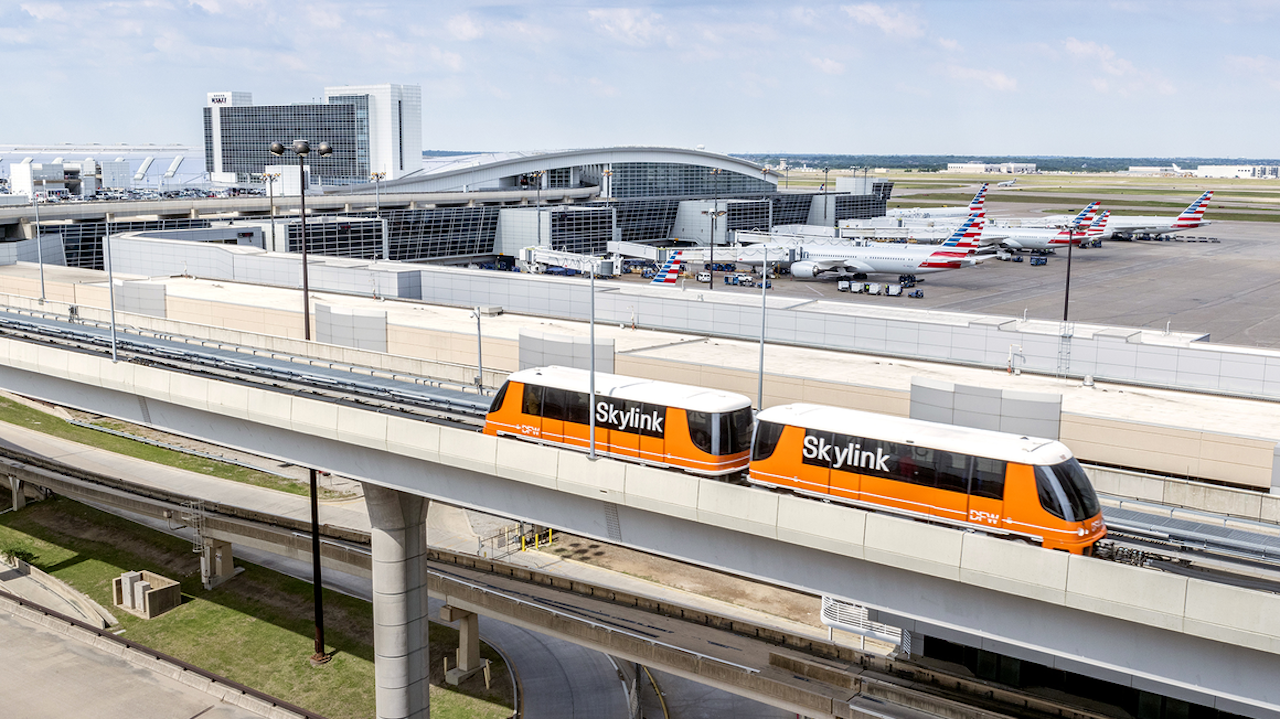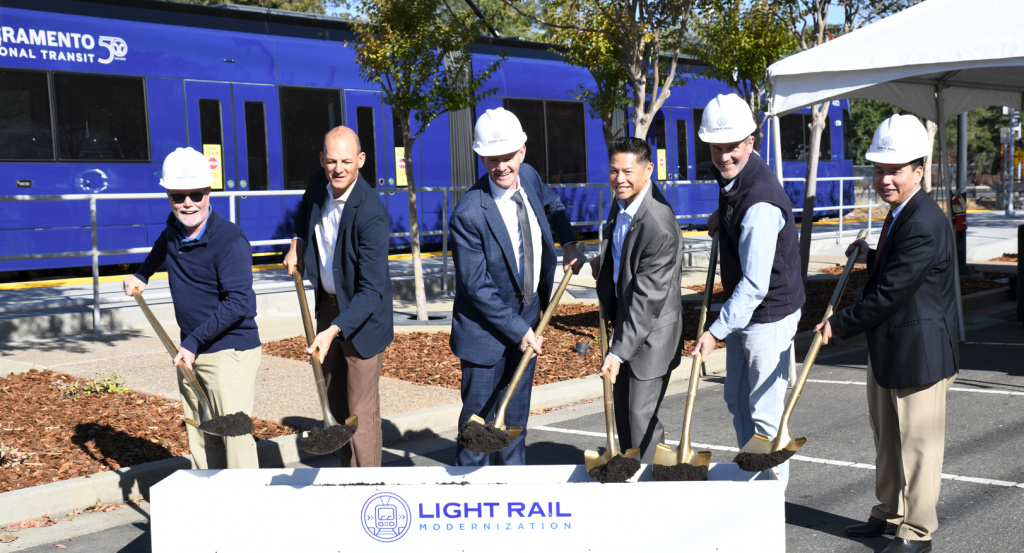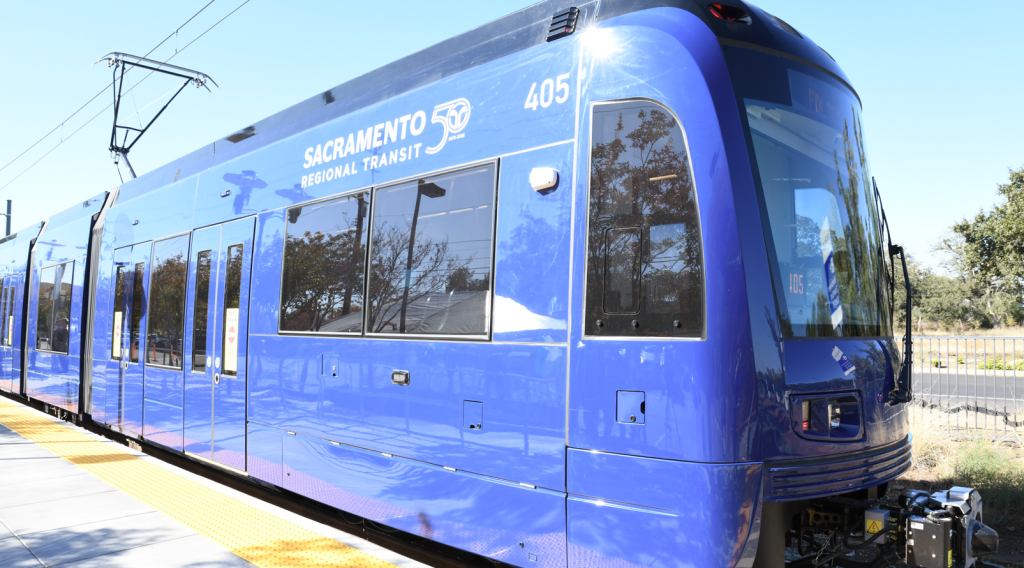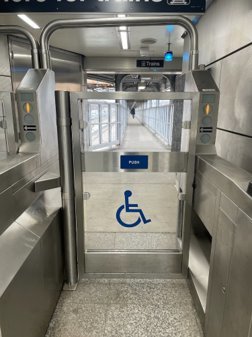
Transit Briefs: KDOT, Amtrak, Alstom, SacRT, CTA
Written by Carolina Worrell, Senior Editor
Image Courtesy of Alstom
The Kansas Department of Transportation (KDOT) gives an update on the proposed expansion of Amtrak’s Heartland Virtual Flyer line into Wichita. Also, renovation is complete on Amtrak’s Staples Mill Station; Alstom signs a contract with Dallas Fort Worth (DFW) International Airport for a modernization and replacement program for its Skylink automated people mover (APM) system; the Sacramento Regional Transit District (SacRT) celebrates its Light Rail Modernization Project and groundbreaking ceremony for Folsom 15-minute light rail service; and the Chicago Transit Authority (CTA) enhances rail station access with new Americans with Disabilities (ADA) faregates.
KDOT
KDOT on Nov. 8 held a virtual update on the proposed expansion of Amtrak’s Heartland Flyer line that would connect Oklahoma City to Newton, according to a KAKE report.
According to the report, KDOT says the last major hold up on this “long sought after program is potential federal funding to get it started,” adding that it could hear back as soon as the end of November if the project is selected for the federal Corridor ID Program.
KDOT Director of Multimodal Transportation Cory Davis said that “provided opportunity for funding for not only planning on the service, but also project development, environmental review, preliminary engineering, design, construction and visually operation as we move through the pipeline.”
According to the KAKE report, the extension would create two new stops, one in Wichita and one in Arkansas City. Sedgwick County Commissioner Pete Meitzner said if approved, the project would have a “major positive impact throughout South Central Kansas.”
KDOT says, as of now, it looks like service would start in 2029 if the project is approved but Davis “believes [it] could be fast tracked and get up and running sooner,” according to the report.
“While many other applicants for the Corridor ID Program are waiting on approval to be able to start their service development plan, we have elected to forge ahead and be ahead of the game, which could put us in a better place to move this service forward in a much more rapid manner.”
Amtrak
Amtrak’s Staples Mill Station, located in Henrico County, Va., has been brought into the 21st Century following recently completed upgrades that included additional seating and style updates in the lobby and refinished walls and floors throughout the station and restrooms, according to an 8News report.
According to an Amtrak spokesperson, the following trains provide daily service to Staples Mill Station:
- Carolinian: New York to Charlotte.
- Palmetto: New York to Savannah.
- Silver Meteor: New York to Miami.
- Silver Star: New York to Miami.
- Amtrak Virginia trains for service to DC and other cities in the Northeast.
According to the report, this isn’t the first recent upgrade project at the station, which saw its parking lot capacity double in 2018, in addition to new ADA spaces and a dedicated bus loading zone, thanks to the help of an $8.5 million investment from the Virginia Department of Rail and Public Transportation.
The Staples Mill location is one of two Amtrak locations in the Richmond area, the other being the city’s iconic Main Street station, which completed a $95 million renovation project of its own in 2018.
According to the 8News report, ridership for the Staples Mill Station, which first opened its doors in November 1975, for Fiscal Year 2022 was 303,204.
Alstom
Alstom announced Nov. 13 that it has signed a $72.2 million contract with DFW to deliver a modernization and replacement program for the airport’s Skylink APM system.
Under this contract, Alstom’s scope of work includes the overhaul, retrofit or replacement of vehicle and wayside components “necessary to mitigate obsolescence and allow the system to provide continuous, reliable, and safe operation.”
In 2022, Alstom signed a 10-year contract to continue maintaining the 64 Innovia APM 200 vehicles, subsystems and related components. Alstom is also responsible for maintaining the eight-kilometer elevated dual-lane guideway, which includes the guide beam, third rail power, power distribution, guideway heating systems, and Automatic Train Control (ATC) equipment. Alstom currently has a team of 100 operations and maintenance experts devoted to serving the DFW Skylink, with a consistent operational performance of 99.7%.
“Dallas Fort Worth International Airport is one of the busiest in the world, and the Skylink APM is fundamental to moving passengers and the employees who keep the airport running,” said Alstom Americas President and CEO Michael Keroullé. “We are grateful for DFW’s long-term partnership, which demonstrates the value our services team continues to bring to our airport customers. We are committed to this partnership. This new contract will allow us to further enhance the world-class experience people have come to expect from Skylink.”
According to Alstom, the company has more than 50 years of experience in designing, building, maintaining and operating fully automated and energy efficient APM systems, delivering more than 30 systems with full operations and maintenance support. The company installed the world’s first driverless APM system at Tampa International Airport in 1971. This level of performance, the company says, has led airports around the world, including eight of the 10 busiest airports in the U.S., “to choose Alstom for their automated transit systems, and confirms Alstom’s position as the #1 private operator in North America.”
The driverless Innovia APM, Alstom says, is a transportation solution specially designed to serve airports and dense urban areas. It offers quick, comfortable, and convenient service for commuters within cities, to and from airports, or between airport terminals. Innovia APM cars operate on a dedicated guideway underground, on ground level, or elevated, avoiding interference with surrounding road or runway traffic. “Built on 50-plus years of successful and dependable operation, Innovia APM solutions incorporate modern aesthetics and advanced subsystems for optimized functionality,” Alstom said.
SacRT
SacRT on Nov. 8 recognized a significant milestone with the celebration of the Light Rail Modernization Project and the groundbreaking ceremony for Folsom 15-minute light rail service, marking the beginning of construction for the passing track near Glenn/Robert G. Holderness Station, “a pivotal step in enhancing the transit experience for Folsom area rides,” the agency said.

Beginning January 2024, construction will require a temporary light rail service disruption between Historic Folsom and Iron Point stations. To minimize inconvenience, SacRT will offer shuttle bus service during this period, ensuring riders can still access the impacted stations. For park-and-ride users, Iron Point Station will serve as the primary boarding point for downtown-bound trains. Construction is expected to last approximately six months.
Upon completion, the new passing track will allow for 15-minute light rail service frequency, compared to 30-minutes today, for Hazel, Iron Point, Glenn/Robert G. Holderness and Historic Folsom stations. Also, the new low-floor light rail trains will begin service along the Gold Line.
The Light Rail Modernization Project, including the addition of new low-floor trains and station platform modifications, “underscores SacRT’s commitment to sustainable, state-of-the-art public transportation solutions,” the agency said.
SacRT is currently in the testing process for 17 new low-floor trains, which were built at Siemens Mobility in south Sacramento. SacRT has an order of 36 trains with the option to purchase up to 76. SacRT has also been actively modifying station platforms along the Gold Line to meet the height requirements of the new low-floor trains. The trains are expected to be in service on the Gold Line by summer 2024.

“As we embark on this transformative journey, we recognize the temporary disruptions and inconvenience this may cause our riders,” said SacRT General Manager/CEO Henry Li. “We are working diligently to streamline the construction process and provide alternative transit options to mitigate any inconvenience for our valued passengers.”
“This construction project represents a significant leap forward in our efforts to modernize Sacramento’s transit system,” said SacRT Board Chair and Sacramento County Supervisor Patrick Kennedy. “The 15-minute Folsom light rail service will not only reduce travel time but also enhance the overall commuter experience, aligning with our commitment to providing efficient and accessible public transportation.”
CTA
CTA announced Nov. 9 that it is installing new and improved faregates at rail stations across the system that are ADA compliant while being more reliable, taller and durable. Work to replace existing Special Access Gates (SAGs) across the rail system will continue through early 2024.

According to CTA, the new doors include an improved locking mechanism with more reliable hardware and will operate in the same manner as the existing gates. To help reduce fare evasion, the doors are taller, and the exit button will be more difficult to reach from the unpaid side. The new ADA faregates are designed to improve accessible entrances at CTA rail stations and address fare evasion concerns, including those entrances that may not be staffed with a Customer Service Representative (CSR).
CTA says its investment follows similar rail gate infrastructure improvement projects by transit agencies across the country to address fare evasion concerns, including Washington Metropolitan Transit Authority (WMATA), Bay Area Rapid Transit (BART), and Southeastern Pennsylvania Transportation Authority (SEPTA).
Currently, 24 of the new ADA doors have already been installed at rail stations across the system. They will replace the remaining 119 SAGs located throughout the CTA rail system by early-2024.
“The installation of these new ADA faregates balance the agency’s goal of enhancing accessibility throughout the rail system, while also addressing concerns around individuals entering rail stations with the intent to disrupt our service or other riders,” said CTA President Dorval R. Carter, Jr.
“As a wheelchair user myself, I am glad that these new doors will be more reliable and durable for those who cannot use turnstiles and are dependent on these gates functioning properly,” said CTA ADA Compliance Programs Manager, Irma Gomez-Fierro. “In addition, these new faregates will serve as an added safety measure, helping deter individuals from misusing the doors and preventing the wrong riders from utilizing an accessible entrance.”



